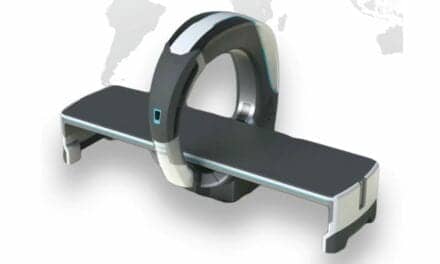 Computed radiography is a lot like a collectable car. Both have been to numerous shows, have undergone many improvements and seem to be valued more with time. CR continues to offer facilities a cost-effective ride into digital imaging, winning the attention of people looking for efficiency and a price tag that won’t give them sticker shock. Proponents say CR is far from dated technology. As orthopedic surgeons embark on CR for long-length imaging and radiologists wait for CR mammography to run the FDA obstacle course, computed radiography continues to capture the interest of medical facilities.
Computed radiography is a lot like a collectable car. Both have been to numerous shows, have undergone many improvements and seem to be valued more with time. CR continues to offer facilities a cost-effective ride into digital imaging, winning the attention of people looking for efficiency and a price tag that won’t give them sticker shock. Proponents say CR is far from dated technology. As orthopedic surgeons embark on CR for long-length imaging and radiologists wait for CR mammography to run the FDA obstacle course, computed radiography continues to capture the interest of medical facilities.
Industry Analyst Antonio Garcia of Frost & Sullivan’s (San Jose, Calif.) Medical Imaging Research Group sees CR’s place in the market as secure for now. “A number of people were thinking that CR would wilt away as more DR models came on the market, but I think what we’re seeing is that DR has not reached a price point where you can go in and replace all those existing x-ray machines with a digital radiography system,” Garcia says. “Even if you could replace [several] x-ray machines with one DR machine, that still hasn’t reached a price point where that is financially viable for most facilities to do.”
With the high throughput CR readers and the price advantage, the CR market has demonstrated appeal, according to Garcia. “If there were an issue with image quality, I think that would make people think twice, but because there really isn’t a big issue, there really are no significant differences in the quality generated by CR vs. DR, people are saying ‘We get the same quality [more affordably], so let’s go with CR.’”
At Lahey Clinic (Burlington, Mass.), CR has improved efficiency and markedly reduced patient waiting time to get image results. Prior to CR, a patient would come down from the referring physician’s office to radiology and wait an average of four and a half to six and a half hours to get a study done. “Now the wait times are down to 22 minutes, and that’s a mean,” says Anna Chacko, M.D., chairman of radiology at Lahey. “Most wait less than that.”
The QC is accomplished instantaneously. “That makes such a huge difference, and with cassetteless radiology, the image is available almost instantaneously,” Chacko says. “This consequently improves throughput [and] of course translates to the fact that we now have time on our schedule to do more patients, where before we didn’t.” Lahey uses Fujifilm Medical Systems Inc.’s (Stamford, Conn.) Speed Suite and the SmartCR
Please refer to the April 2003 issue for the complete story. For information on article reprints, contact Martin St. Denis




